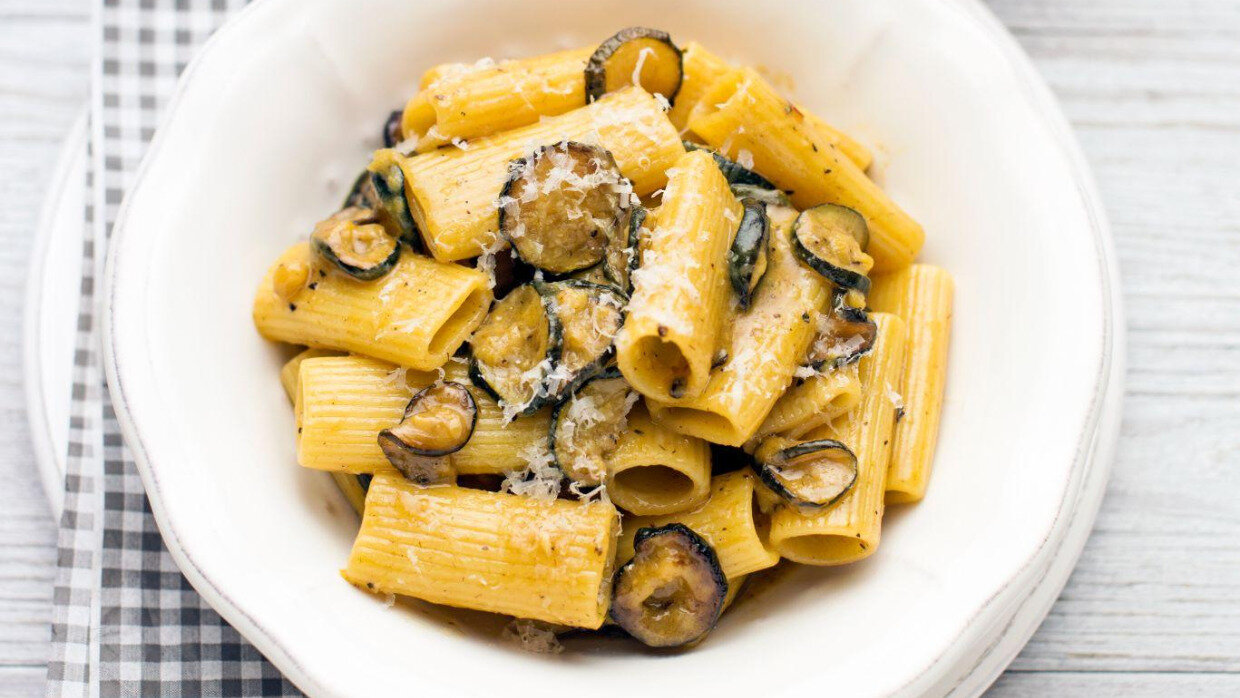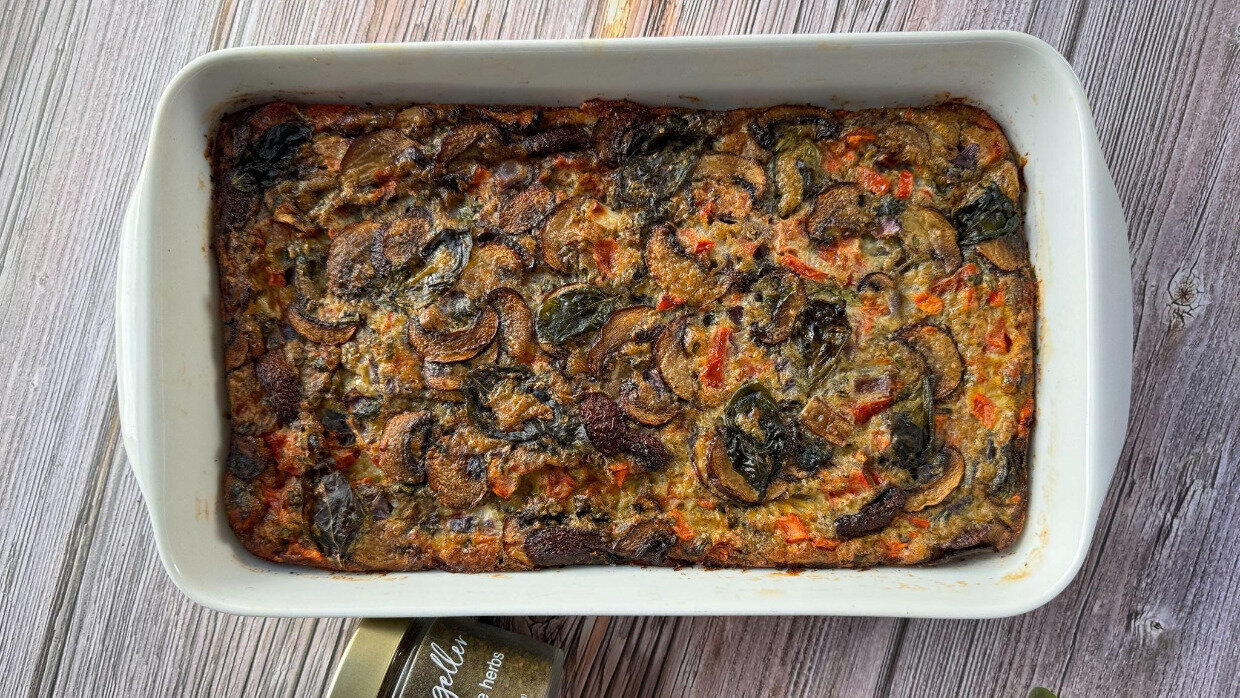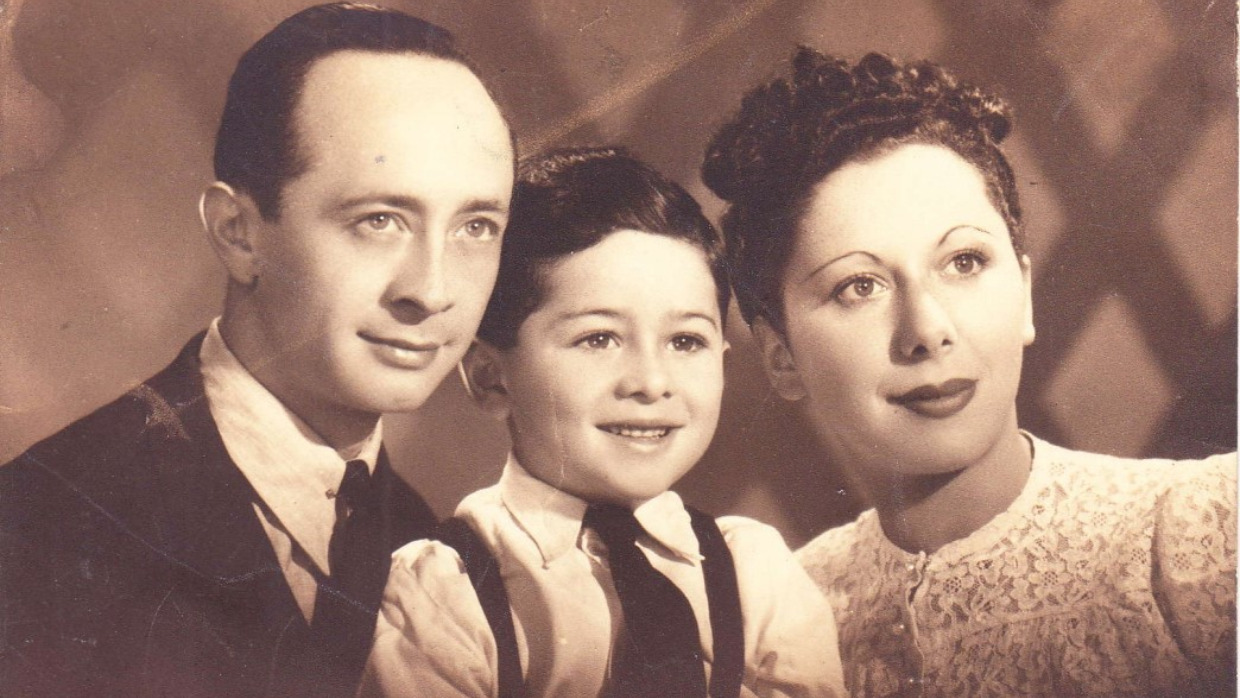The classic Italian carbonara recipe from Rome is made with pancetta, eggs, and lots of Parmesan cheese. Roman Jews took out the original recipe’s forbidden pork and avoided the meat-dairy combination by substituting the pancetta with courgette (zucchini). The result is this delicious vegetarian carbonara.
In Rome, it is also possible to make this a meaty dish with local varieties of carne secca or coppiette (cold cuts of dried beef) that the city’s kosher butchers sell. Cheese is omitted from the meat version, but the eggs still give it a wonderful ‘creamy’ consistency. You can, of course, substitute kosher salami from anywhere in the world, but to my Roman taste buds, it’s just not the same.
Ingredients
- 4 –5 tablespoons extra virgin olive oil
- 3 cloves garlic crushed
- 2 anchovy filets in oil optional
- 1 Pinch of dried chili flakes or chili powder
- 1 Splash white wine
- 2 lb 4oz courgettes sliced into thin rounds 1kg
- 1 tablespoon coarse or kosher salt for the pasta water
- 1 lb 2oz pasta of your choice 500g
- 2 large eggs
- Grated zest of ½ lemon
- Parmesan cheese freshly grated, to taste
- Sea salt and black pepper to taste
Nutritional Facts
Instructions
- Warm the oil in a large, non-stick frying pan over a low heat together with the garlic, anchovy filets (if using) and chili. Cook for 1 minute until the garlic softens (it should not brown), then add a splash of wine. Let the wine evaporate, then add the courgettes with a good pinch each of salt and pepper. If the pan is too crowded, split them between two frying pans. Stir well, partially cover and cook over a low heat, stirring occasionally, for 10 minutes until the courgettes soften. Remove the lid, slightly increase the heat to medium and cook, stirring occasionally, for a further 15–20 minutes, until golden.
- While the courgettes are cooking, bring a large saucepan of water to the boil. Add the coarse or kosher salt and the pasta. Stir and cook, uncovered, over a medium heat, according to the packet timings (or until al dente). Before draining the pasta, remove 1 cup of cooking water from the pan and set aside in case it is needed to keep the final mixture moist.
- Drain the pasta, add it to the frying pan of courgettes and toss through over a medium heat. If the pan is too small, remove from the heat and transfer everything to a large heatproof bowl. Mix thoroughly and slowly add some of the water you set aside earlier. You will see that the pasta absorbs the liquid as you stir. If it looks dry, add a little more water – you may not need all the liquid.
- Gently beat the eggs in a serving bowl, then add the lemon zest and a couple of tablespoons of grated Parmesan. Add the pasta and courgettes and toss thoroughly.
- Serve immediately, with plenty of extra Parmesan.
Recipe and photo courtesy of Jewish Flavours of Italy Cookbook.















